Community Profile: Megasites Spur Big Turnaround for Mississippi Region
Photo Gallery | Article
Photo Gallery

The Russian-owned Severstal plant was one of the first tenants on the TVA-anointed megasite next to the airport. By the end of this year, the plant will have the capacity to make 3.4 million tons of rolled steel a year. When the plant was being built, it was the largest industrial project in the nation. First photo by Susan C. Thomson; second, from company web site.
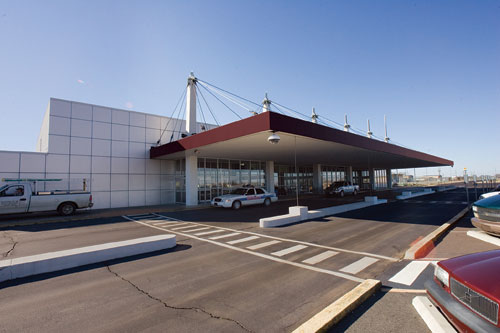
The Golden Triangle Regional Airport is surrounded by new industrial development. Photo by Chris Jenkins
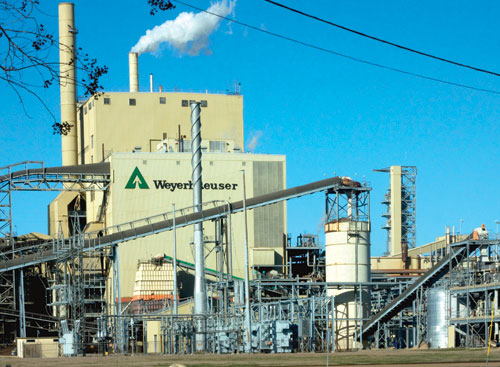
This Weyerhaeuser plant makes specially treated, fluffy, absorbent fibers for use in diapers and other products. Photo by Susan C. Thomson
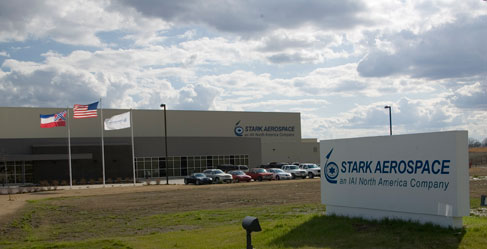
Stark Aerospace opened up next to the airport three years ago. Stark makes drones. It is an outgrowth of the flight research lab at Mississippi State University. Photo by Chris Jenkins.
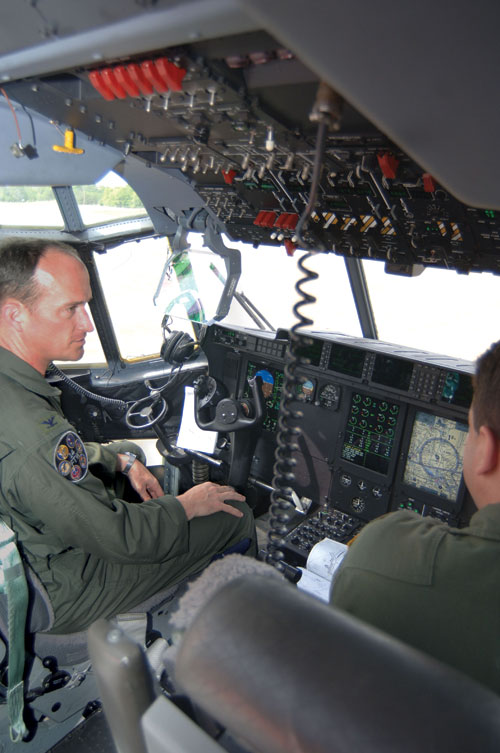
The Columbus Air Force Base has the largest payroll in the area; here, two colonels check out a C-130J. Photo by U.S. Airforce Base, Columbus, Miss.
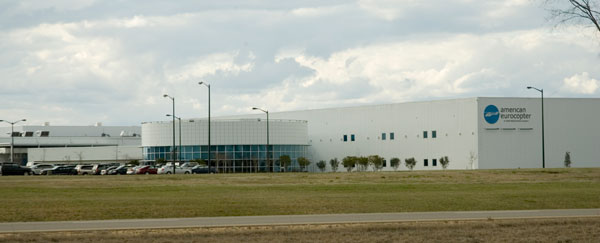
American Eurocopter, a subsidiary of a French-German helicopter maker, chose Lowndes County in 2002 for its first U.S. plant. Photo by Chris Jenkins.

Downtown Columbus has been refurbished and is once again a draw for residents and tourists. The area has always been well-known for its antebellum and Victorian homes. Two national preservation-related awards have been bestowed on the city in the past few years. Photo by Susan C. Thomson

White Arches, built in 1857, is one of Columbus' signal antebellum homes. Photo by Susan C. Thomson.
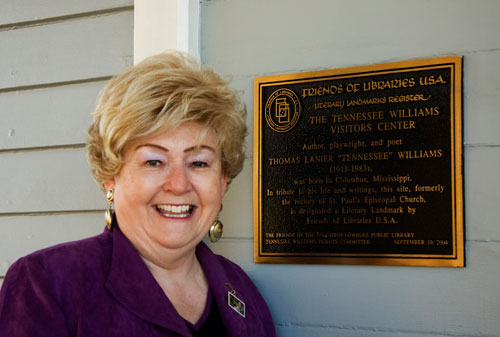
Brenda Caradine owns a bed and breakfast in Columbus. A civic booster, she organizes the city's annual Tennessee Williams festival. Photo by Susan C. Thomson.
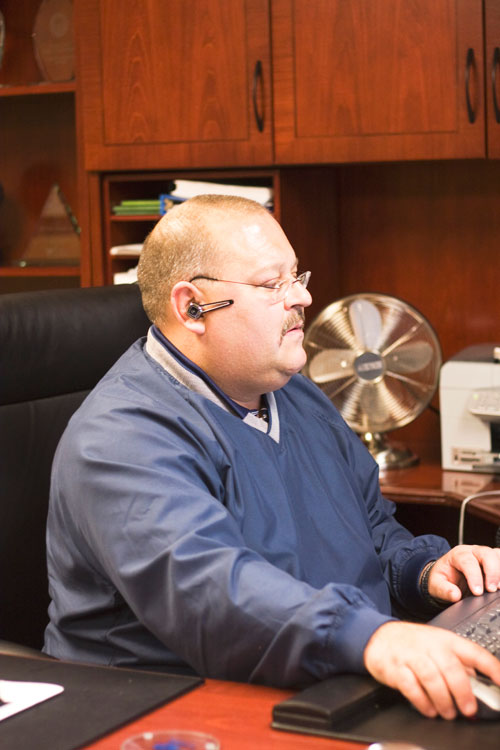
Joe Max Higgins is the chief executive of The Link, a combination chamber of commerce and economic development organization. Photo by Susan C. Thomson.
Columbus, Miss., anchor of northeastern Mississippi's "golden triangle" area, has always turned heads, if only for its dozens of well-kept antebellum and Victorian homes. Now, the city's once rundown downtown also catches eyes, what with its colorfully refurbished facades on new shops, restaurants and upper-level apartments. Small wonder, then, that Columbus earned a Preserve America award from the federal government in 2005 and a place on the National Trust for Historic Preservation's annual Dozen Distinctive Destinations list in 2008.
Meantime, surrounding Lowndes County as a whole has been grabbing attention for a different kind of renaissance—industrial and grand-scale. The Columbus-Lowndes Development Link, a combination chamber of commerce and economic development agency, calculates that the county has gained $3.5 billion in new business investment and 3,734 new jobs since 2003. Most of this has happened around the Golden Triangle Regional Airport, its name taken from the way Columbus and nearby Starkville and West Point have together defined themselves for decades.
"The main thing that happened that changed this community was megasites," says Joe Max Higgins, the Link's hard-driving, plain-speaking chief executive.
The Tennessee Valley Authority coined the term in 2004 for sites in the TVA region that could be deemed worthy of large-scale development—1,000 acres in size, environmentally clean, and accessible to transportation and utilities, among other criteria.
Higgins and his staff hopped on the opportunity, hurrying together an application—a foot-high stack of papers—for a 1,400-acre plot aside the airport. It became one of the first two certified by the TVA's independent megasite consultant. Five months later, a new steel-making venture spoke for it.
At a proposed 1.2 million square feet and an initial investment of $625 million, the SeverCorr plant, a joint U.S.-Russian startup, was the largest industrial project under construction in the nation at the time, according to the Mississippi Development Authority. Lowndes County and the state of Mississippi went together—and to great lengths—to secure it.
From the state, the company got a $25 million grant and $10 million loan for infrastructure plus a bunch of tax credits and breaks on sales taxes and other state taxes. The county contributed the land, a $5 million infrastructure grant and a cut of about 40 percent on real estate taxes. Together, the incentives were worth about $100 million.
Of eight eventual megasites, Lowndes County won two, the second consisting of 1,800 acres on the airport's other side. Paccar, of Bellevue, Wash., asked for a piece of it, proposing a $400 million, 420,000-square-foot plant to make diesel engines for the company's Kenworth and Peterbilt trucks. Once again, the county and state teamed to cobble together a package of loans, grants and tax favors, with a total value this time of $40 million.
SeverCorr, which changed its name to Severstal after its Russian partner became sole owner, began production in 2007 and is now doubling its capacity to 3.4 million tons of rolled steel a year in a final construction phase. When the project is completed at the end of the year, the company projects it will have 650 employees—50 more than it promised the state in return for its concessions—and a total start-to-finish investment of $1.4 billion in the plant.
Paccar, after a year's delay due to the recession, is gearing up to open later this year with 250 employees and a commitment to the state for 250 more by 2013.
Severstal and Paccar have only been the biggest deals among many that together have transformed Lowndes County into what Allegra Brigham describes as the economic "hub county for the region." Brigham is the chief executive of the Lowndes-based 4-County Electric Power Association, which actually serves all or parts of eight counties. She says all of the counties have "tremendously benefited" from the new industry Lowndes has succeeded in landing.
It adds up to a stunning turnaround for a city and county that Higgins says tried but failed to attract any significant new employers for the previous 20 years. All that time, the area was hemorrhaging jobs—most of them low-pay—as a number of manufacturers closed shop or moved away, says Harry Sanders, member and former president of the Lowndes County Board of Supervisors and a lifelong Columbus resident.
The new jobs, by contrast, require more skills and pay above average, Higgins says. As is typical of Mississippi, all the jobs are nonunion.
While "local people moving up" have taken most of the new slots, some have been filled by "a number of new people from all over the place," says Jim McAlexander, president of Cadence Bank in Columbus.
Some of the newcomers have bought and restored historic homes, producing a "great economic impact on the town," says Brenda Caradine, who moved to Columbus 15 years ago, bought one of those historic homes and turned it into a bed and breakfast.
She also organized the city's annual Tennessee Williams Tribute, a week or more of lectures, parties, house tours and professional performances that take their cue from the playwright's birth in Columbus in 1911. The Columbus Convention and Visitors Bureau has restored the 1875, two-story house where he was born and lived until he was nearly 4 and made it the town's welcome center.
The town's 70-year-old annual spring "pilgrimage"—two weeks of home and garden tours, concerts, carriage rides and historic re-enactments—is the centerpiece of the bureau's year-round menu of cultural, historical and recreational offerings.
The industrial boom has been a plus for tourism, resulting in "more people going to events, more people able to visit our attractions," says James Tsismanakis, the bureau's chief executive.
For all the new industry, the Columbus/Lowndes economy still rests on some old reliables. Paper maker Weyerhaeuser, a county presence for 30 years, operates two plants, one making pulp, the other turning it into an absorbent used in diapers and feminine hygiene products.
Baptist Memorial Hospital, formerly Lowndes County Hospital, not only generates jobs, but the county's profit on its sale in 2003 freed up funds for economic development, Sanders says.
But the area's No. 1 economic engine has long been, and remains, the Columbus Air Force Base, a pilot-training facility since World War II. Its payroll is by far the largest around, and about 55 percent of its employees are civilians, hired locally. Adding together its payroll, its annual expenditures and the estimated value of the jobs it creates indirectly, the base has calculated its annual economic impact on Columbus at $321 million.
"And it's a constant," says Sanders. "They don't have layoffs." An economic cushion in bad times past, the base has also proved a catalyst for the better times now following.
The base figured "in the dynamics" in 2002 when American Eurocopter, a subsidiary of a French-German helicopter maker, chose Lowndes County for its first U.S. plant, says Earl Walker, its general manager. Among the area's attractions, company officials at the time also mentioned Mississippi State University and the regional airport.
With daily passenger flights to Atlanta and Memphis, the airport is already Mississippi's third busiest. Its 6,500-foot runway is being lengthened to 8,000 feet to accommodate larger planes and has room to grow to 10,000 feet, while the airport itself has space for a second runway.
The university, in next-door Oktibbeha County, is known for its premier aerospace engineering programs and a flight research lab that helped give birth to Stark Aerospace and the Mississippi operations of Aurora Flight Sciences Corp., based in Manassas, Va. The companies took up residence near the airport in 2007 and 2006, respectively, Stark to make and Aurora to develop unmanned aircraft, commonly called drones.
The airport, the university, Eurocopter, Stark and Aurora have together provided the area with a critical—and marketable—mass of flight-related assets.
Seeking to capitalize on them, the Link late last year announced its most ambitious industrial development yet. The Golden Triangle Global Industrial Aerospace Park consists of 2,500 acres bordering the second megasite and offers the potential of 12 to 13 million square feet of buildable space.
"It will be created along the same lines as the megasites, although no more certifications are available," Higgins says. Only two other sites in the entire Southeastern U.S. will offer any competition, he adds.
McAlexander sees "tremendous potential" in a development targeting "one of the fastest growing industries in the future." And its creation is timely, he says, positioning Columbus/Lowndes County to be "far ahead of the game" when the economy takes off.
Lowndes County, Miss., by the numbers
| POPULATION |
59,284 (1)
|
| LABOR FORCE |
25,844 (2)
|
| UNEMPLOYMENT RATE |
11.6 percent (2)
|
| PER CAPITA PERSONAL INCOME |
$29,124 (3)
|
| (1) U.S. Bureau of the Census, estimate July 1, 2008 | |
| (2) HAVER (BLS), December 2009 | |
| (3) BEA/HAVER, 2007 | |
| Top Employers | |
| Columbus Air Force Base |
3,075
|
| Baptist Memorial Hospital |
1,095*
|
| Lowndes County Public Schools |
815*
|
| Columbus Municipal School District |
663*
|
| Severstal |
550
|
| Weyerhaeuser |
550
|
| SOURCES: Self-reported | |
| *Includes part-time | |
Views expressed in Regional Economist are not necessarily those of the St. Louis Fed or Federal Reserve System.
For the latest insights from our economists and other St. Louis Fed experts, visit On the Economy and subscribe.
Email Us

